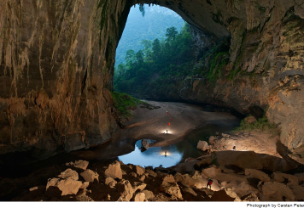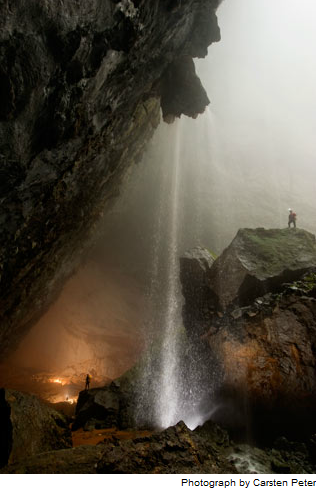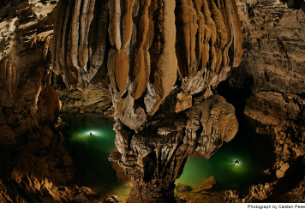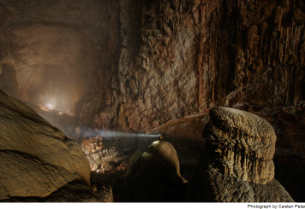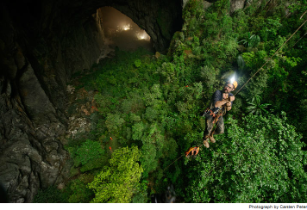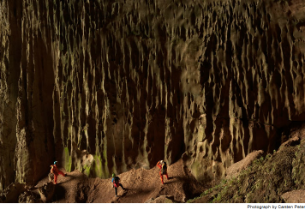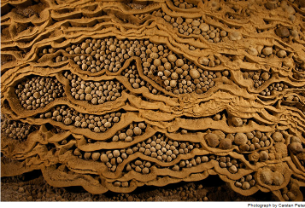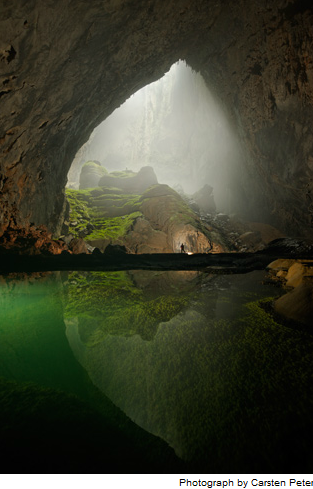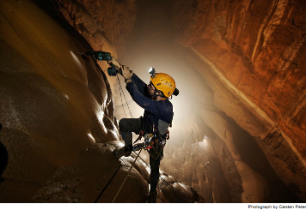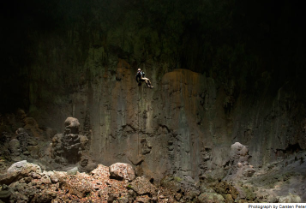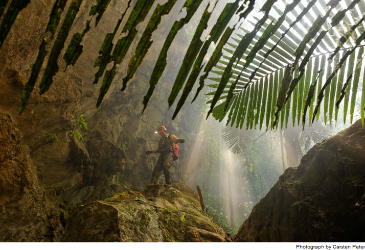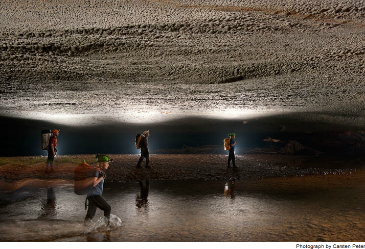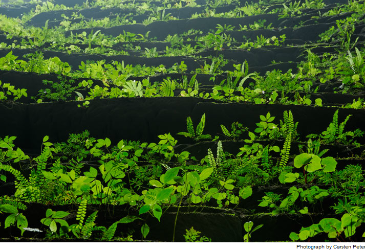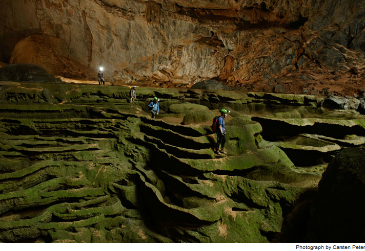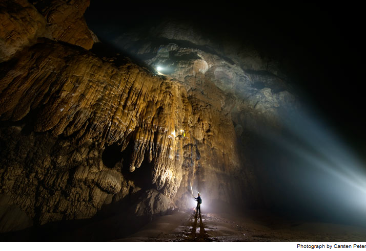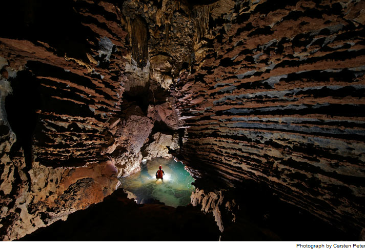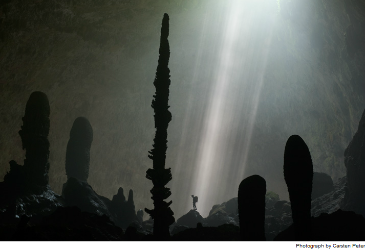Son Doong Cavern's Awesome Photography
San Doong cavern, the world's largest single cave passage ever found so far, has been recently uncovered and surveyed by a joint British-Vietnamese exploratory team in the dense jungles of Vietnam. Locals have known about the cave for sometime, but no one had the courage to explore and look into it. What the survey team discovered was a cave so mammoth that it could accommodate a skyscraper within its environs. In most places, it measured 260 ft x 260 ft. There was a two mile distance where it measured 460 ft x 460 feet. The explorers had walked 4.5 kms into the cave before seasonal flood waters blocked further movement to reach the end of the cave, which was believed to extend to several kilometers more. The survey will be continued in some future time to fully measure its massive dimensions. Son Doong Cave has dislodged the Deer Cave in Borneo for the distinction of being the largest cave in the world.
|
||||||
Son Doong Cavern Interior
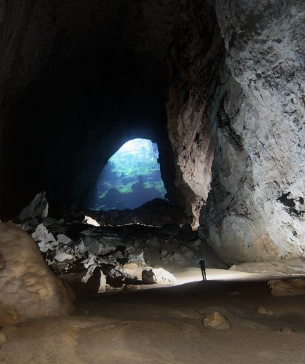 A local farmer who found the mouth of Son Doong cave several years ago in the dense jungles of Vietnam's Phong Nha-Ke Bang National Park guided the British expedition team to the cavern in April. The noise of a waterfall exploding through a sinkhole opening sounded like a roaring train. A giant cave column swagged in flowstone towers over explorers swimming through the depths of Hang Ken, one of 20 new caves discovered last year in Vietnam. Going underground, expedition members enter Hang En, a cave tunneled out by the Rao Thuong River. Dwindling to a series of ponds during the dry months, the river can rise almost 300 feet during the flood season, covering the rocks where cavers stand. A roof which collapsed long ago lets light in the cave. Thick plant growths followed resulting in a forest in a cave. Like a petrified waterfall, a cascade of fluted limestone, greened by algae, stops awestruck cavers in their tracks near the exit of Hang En. Rare cave pearls fill dried-out terrace pools near the Garden of Edam in Hang Son Doong. This unusually large collection of stone spheres formed drip by drip over the centuries as calcite crystals left behind by water layered themselves around grains of sand, enlarging over time. Like a castle on a knoll, a rock formation shines beneath a skylight in Hang Son Doong. A storm had just filled the pool, signaling that exploring season was coming to an end. The trickiest challenge for the expedition team was to find a way over the Great Wall of Vietnam, an overhanging mass of flowstone that blocked the way deep inside Hang Son Doong. Climbing specialists work on anchoring bolts to the slippery, porous rock to support the weight of climbers using ropes. Once over the wall, the expedition team discovered a second entrance into the cave. Taking the only way in, a climber descends 225 feet by rope into Hang Loong Con. A survey party discovered the cave in 2010, hoping it would connect with the enormous Hang Son Doong. A wall of boulders soon blocked the way, but a powerful air current indicated that a large cavern lay on the other side.
Related Site |
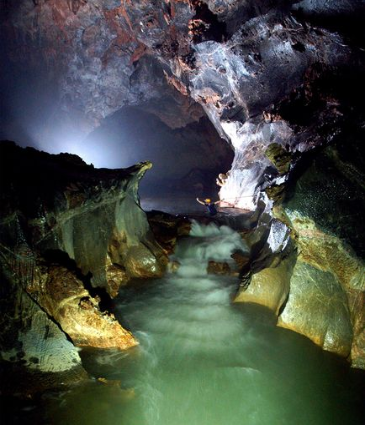 A British caver wades through Vietnam's Son Doong cave. [Photograph by Barcroft/Fame Pictures] 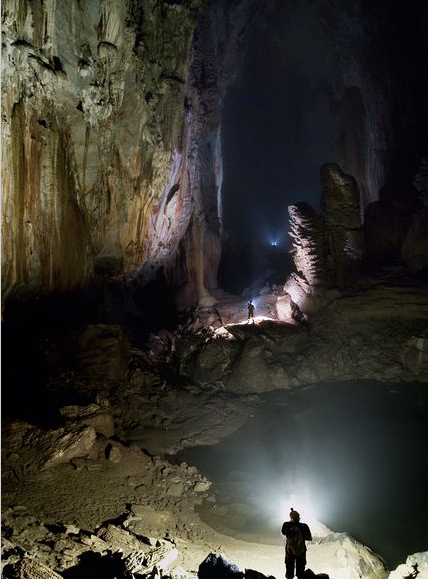 Cavers' headlamps light up the towering walls of Vietnam's Son Doong cave. [Photograph by Barcroft/Fame Pictures] Moss-slick boulders at the forest-shrouded entrance to Hang Son Doong. 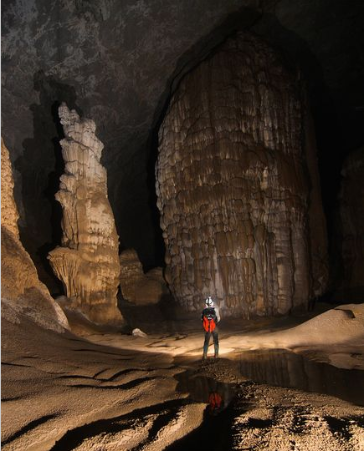 A half-mile block of 40-story buildings could fit inside this lit stretch of Hang Son Doong. [Photograph by Barcroft/Fame Pictures] A climber ascends a shaft of light in Loong Con, where humidity rises into cool air and forms clouds inside the cave. Headroom shrinks in the middle of Hang En as cavers pass beneath a ceiling scalloped by eons of floodwater rushing past. The river shortly reemerges onto the surface, then burrows into Hang Son Doong after a few miles. Hang Son Doong's airy chambers sprout life where light enters from above—a different scene from the bare, cramped, pitch-black spaces most cavers are familiar with. Ferns and other greenery colonize rimstone. In the jungles directly beneath roof openings, explorers have seen monkeys, snakes, and birds. Algae-skinned maze on the way across a sculpted cavescape in Hang Son Doong. Dubbed the Great Wall of Vietnam, a 200-foot cliff halted the advance of the first team to enter Hang Son Doong, in 2009. When explorers returned, bolts were drilled for climbers to scale the obstacle with ropes. A white streak below, to the right marks how high water rises during the wet season. In the dry season, from November to April, a caver can safely explore Hang Ken, with its shallow pools. Come the monsoon, the underground river swells and floods the passages, making the cave impassable. Streams of light from the surface unveil stalagmites fat and thin on the floor of Hang Loong Con. Cavers called the new find the Cactus Garden.
|
|||||

